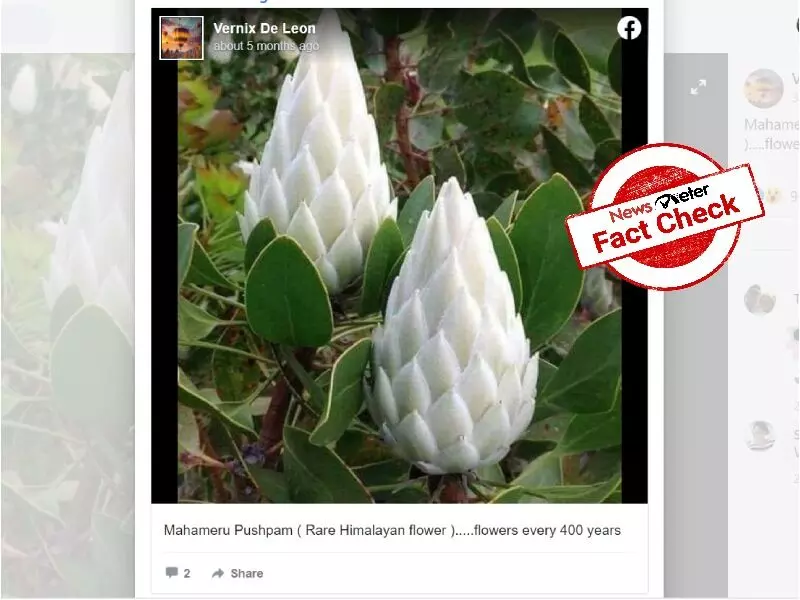Flowers in viral image are not `Mahameru Pushpam'
Several social media users have shared an image of white colored flowers with a claim that they are `Mahameru Pushpam’ that bloom once in 400 years in the Himalayas.
By Satya Priya BN
Several social media users have shared an image of white colored flowers with a claim that they are `Mahameru Pushpam' that bloom once in 400 years in the Himalayas.
"This is the flower which is known as "Mahameru Pushpam" or Arya Pu. It's seen in the Himalayas. It flowers once in 400 years. If we wanted to see it again, you need to wait for another 400 years. So our generation is lucky. So please share maximum. Let other to see it (sic)," reads the claim.
This is the flower known as Mahameru Pushpam or Arya pu. It flowers once in 400 years and seen only in Himalaya.We have to wait next 400 years to see it again.We the generation are fortunate enough to see this miracle of #nature. Share it more and Let's others to see this luckily pic.twitter.com/wkRReyfMR2
— AJAYA KUMAR DAS (@ajaya_ops) October 13, 2020
Archive links:
https://web.archive.org/web/
https://web.archive.org/web/
Fact check:
The claim is FALSE.
When searched using Google Reverse image search, we found several links. Firstly, we similar viral image on dreamstime.com, which was captioned as `Red and white Protea flower- genus of South African flowering plants, also called sugarbushes'.
When searched with the keywords "Protea", we found several stock images of the flowers and buds. According to Alamy stock images, these are Protea Cynaroides, also known as King Protea.
Protea flowers are national flowers of South Africa and are found in large numbers in the country. According to `pza.sanbi.com', a website of South African national biodiversity institute, Protea cynaroides is a woody shrub with thick stems and large dark green, glossy leaves. Most plants are one meter in height when mature, but may vary according to locality and habitat from 0.35 m to 2 meters in height.
The "flowers" of protea cynaroides are actually flower heads surrounded by large colorful bracts. The flower heads vary in size, from about 120 mm to 300 mm in diameter. Large, vigorous plants produce six to ten flower heads in one season, although some exceptional plants can produce up to forty flower heads on one plant. The color of the bracts varies prized.
This article shared several images that show buds and flowers of King Protea.
According to Protea Atlas Project website, flowering lasts for 7 months and there is very little flowering activity between November and April. But these patterns are because this species is widespread (this is the most widespread protea), and at any place flowering seldom lasts more than a few weeks. This species is insect-pollinated (small beetles).
This claim was also viral in 2018. Several fact checking organizations have debunked the claim.
https://www.snopes.com/fact-
https://factly.in/images-of-
Therefore, the viral image does not show rare flower that blooms in the Himalayas once in 400 years. Though we could not find any proof about the Mahameru Flowers of the Himalayas, the image shows the buds of the protea plant, which is the national flower of South Africa. Therefore, the claim is FALSE.